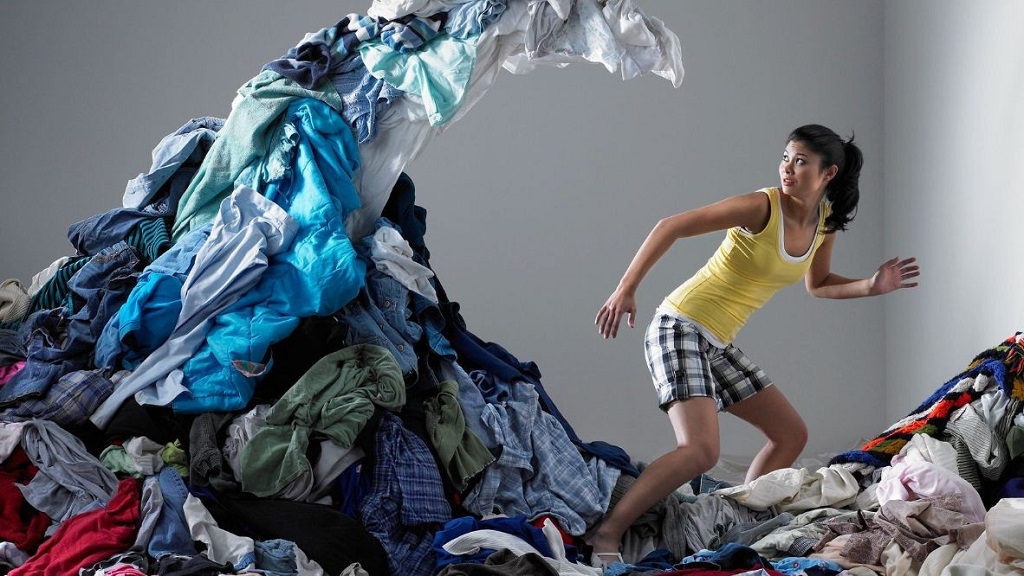The fashion industry, once notorious for its environmental footprint, is undergoing a significant transformation. Consumers are increasingly aware of the environmental and ethical issues associated with fast fashion, demanding a more sustainable approach to clothing production. This shift in consumer consciousness has propelled sustainable fashion to the forefront, prompting major brands and independent designers alike to embrace eco-friendly practices.
The Price of Fast Fashion: Unveiling the Environmental Impact
Fast fashion, characterized by its trendy, low-cost clothing produced at high volumes, has dominated the industry for decades. However, its convenience comes at a hefty environmental cost:
-
Resource Depletion: Fast fashion relies heavily on raw materials like cotton, which requires vast amounts of water and pesticides to cultivate. Synthetic fabrics, a staple of fast fashion, are derived from fossil fuels, further contributing to resource depletion.
-
Pollution: The textile industry is a major polluter. Dyeing processes contaminate waterways, while the production of synthetic fabrics releases harmful chemicals. Microplastics shed from synthetic clothing further pollute oceans and ecosystems.
-
Waste Generation: The “see now, buy now” mentality of fast fashion leads to a culture of disposability. Unwanted garments often end up in landfills, taking hundreds of years to decompose and releasing harmful methane gas.
The Rise of Sustainable Fashion: A Shift Towards Eco-Conscious Practices
Sustainable fashion offers a solution to the environmental problems plaguing the industry. Here are some key principles driving this movement:
-
Ethical Sourcing: Sustainable brands prioritize ethically sourced materials like organic cotton, recycled polyester, and linen. These materials have a lower environmental impact and often support fair labor practices.
-
Slow Fashion: Slow fashion emphasizes quality over quantity. It encourages purchasing timeless pieces made with durable materials, promoting mindful consumption and reducing waste.
-
Circular Fashion: This concept aims to keep clothing in circulation for as long as possible. Strategies include garment repair, upcycling, and clothing rental services, minimizing the need for new clothing production.
-
Transparency and Accountability: Consumers are demanding greater transparency from brands regarding their production processes and supply chains. Sustainable brands are more open about their practices, fostering trust and accountability.
Innovation for Sustainability: Exploring Eco-Friendly Materials and Processes
The fashion industry is embracing innovation to develop more sustainable materials and processes:
-
Natural Materials: Brands are experimenting with natural, low-impact materials like hemp, bamboo, and Tencel, which require less water and pesticides to grow compared to conventional cotton.
-
Recycled Materials: Recycled polyester made from plastic bottles offers a viable alternative to virgin polyester. Recycling reduces reliance on fossil fuels and lessens textile waste.
-
Biodegradable Materials: Innovative materials like mushroom leather and algae-based fabrics offer exciting alternatives to traditional leather and fabrics. These materials decompose naturally, minimizing environmental impact at the end of a garment’s life cycle.
-
Sustainable Dyeing Processes: Natural dyes and innovative low-impact dyeing techniques are being developed to reduce water pollution and hazardous chemical use.
Challenges and Opportunities: The Road Ahead for Sustainable Fashion
While sustainable fashion is gaining momentum, there are challenges to overcome:
-
Cost Factor: Sustainable materials and production processes can be more expensive than conventional methods. However, as consumer demand grows and economies of scale improve, the cost is expected to decrease.
-
Consumer Behaviour: Shifting consumer habits toward mindful consumption and valuing quality over quantity is crucial for the long-term success of sustainable fashion.
-
Industry-Wide Collaboration: Collaboration between brands, manufacturers, and policymakers can accelerate the development of sustainable practices and infrastructure.

Embrace the Change: How You Can Contribute to a More Sustainable Fashion Future
As a conscious consumer, you can play a vital role in driving the sustainable fashion movement:
-
Invest in Quality Pieces: Prioritize well-made garments from sustainable brands. These pieces will last longer and reduce the need for frequent replacements.
-
Embrace Second-Hand Fashion: Thrift stores and vintage shops offer unique finds and extend the life cycle of existing clothing.
-
Support Sustainable Brands: Do your research and choose brands committed to ethical sourcing, eco-friendly materials, and transparency.
-
Care for Your Clothes: Proper washing and care extend the lifespan of your garments. Consider repairing minor damages instead of discarding worn-out pieces.
-
Become an Advocate: Spread awareness about sustainable fashion and empower others to make conscious clothing choices.
Related: How to Wear a Denim Jacket
Conclusion: A Sustainable Future for Fashion
Sustainable fashion is no longer a niche trend; it’s a necessary shift for the future of the fashion industry. By understanding the environmental impact of fast fashion, embracing eco-conscious practices, and supporting sustainable brands, we can create a more responsible and environmentally friendly fashion landscape. This transition requires collaboration between consumers, brands, and policymakers. As consumers, we hold the power to drive change through our purchasing decisions. By opting for sustainable options, we can send a clear message to the industry that the future of fashion lies in environmental responsibility and ethical practices.
The journey towards a sustainable fashion future is ongoing, but the positive momentum is undeniable. With continued innovation, increased consumer awareness, and industry-wide collaboration, we can create a world where fashion is not only about style but also about environmental responsibility and social well-being. Let’s embrace sustainable fashion and pave the way for a more ethical and eco-conscious future for the clothing we wear.



